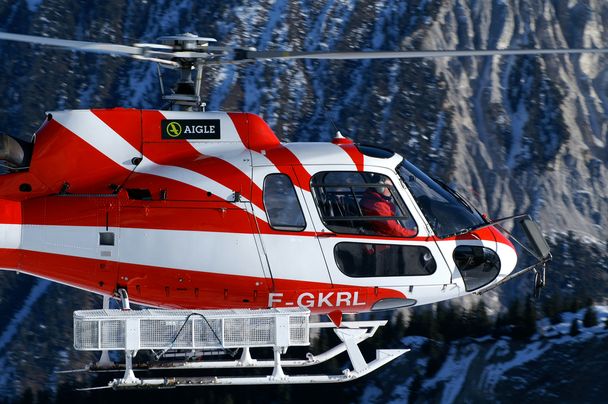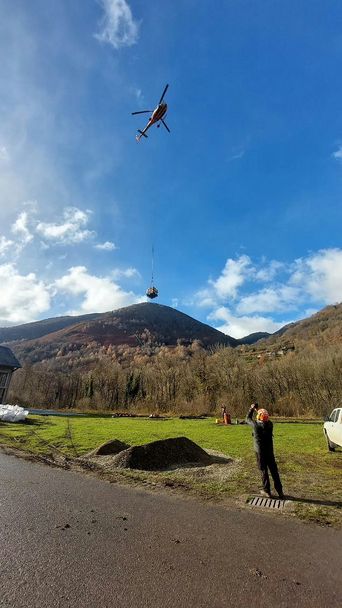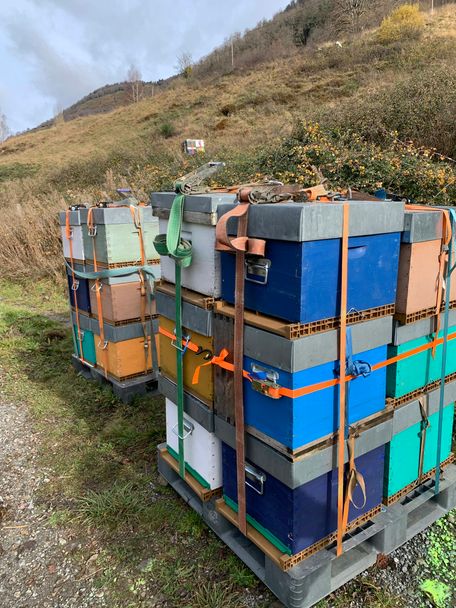To bee or not to bee – the Airbus H125 to the rescue

In the midst of a natural disaster, a swarm of bees took an extraordinary first flight, beneath an SAF Ecureuil. An event worthy of a Shakespearean play, except with no sting in the tale.
In the early days of September 2024, severe weather hit the French Pyrenees. The Aspe valley was lashed by torrential rain, leading to landslides and flooding. Route National 134, which links France to Spain via the Somport tunnel, was cut off, and the water and electricity networks also suffered extensive damage.
Ready for action
“The first effects of the Gave d’Aspe flooding were felt on the night between 6 and 7 September,” explains Jérôme Delhome, pilot and head of the Pyrenees base at SAF Hélicoptères in Ger. The company keeps an H125 stationed there throughout the year for aerial work in the region.
“The flooding got worse during the night, the authorities issued warnings in good time, residents evacuated and there were no casualties,” continued Jérôme Delhome. “My assistants and I were ready to take action on the morning of 7 September, but the wind was too strong. We had to wait until the end of the day to launch the first logistical relief missions.”
Non-stop operations
Everything was transported by sling, with lengths varying from 25 to 70 metres depending on the terrain. The helicopter was also used to transport personal belongings from devastated homes. The light helicopter once again proved its worth, flying up to six hours a day non-stop.
Around two weeks after these dramatic events, the SAF base received a call from the Pyrenees National Park: the situation for beekeepers who could no longer access their hives on the Layers plateau was becoming critical. The forest paths had been destroyed by mudslides, vehicles could no longer get through and the plateau was only accessible on foot. In addition to harvesting several hundred kilos of honey, they also had to bring the hives down to the valley for the winter. The Ecureuil would single-handedly rescue an entire local economy.

A tonne of honey
“The first stage of the job was to bring in the honey,” explains the pilot. “In two round trips, I took almost one tonne down to the village of Borce, 300 metres further down the valley.” Meanwhile, the beekeepers dismantled their hives and prepared them for transport on pallets.
“We put a dozen on each pallet, for a total weight of around 700 kg. We didn’t have a problem with the load, but we were afraid that the hives would get damaged during transport and that the bees would escape.”

‘Beesily’ taking flight
Normally, hives are transported on trailers at night, when the bees are asleep. The noise, rotor blast and possible damage to the hives make caution a necessity, so the bees were smoked inside their hives the night before to give them a few extra hours of peace and quiet during transport. The next morning, the assistants in charge of attaching the loads to the sling worked wearing beekeeping protective gear. The pilot, 35 metres higher up, wasn’t at risk and wore no special protection equipment. After the two round trips to collect the honey, five more were needed to bring the hives to the floor of the valley. Each flight lasted just over eight minutes and the entire operation was completed in less than an hour.
“I’ve been a professional helicopter pilot since 1997 and I’ve clocked up over 16,000 flying hours, including 12,000 on the Ecureuil family,” explains Jérôme Delhome. “In the course of my career, I’ve transported everything from cows and horses to sheep and tourists... but never bees! One thing I learned from this mission is that these insects seemed to enjoy this new kind of flight. They showed no aggression, and nobody got stung.”



